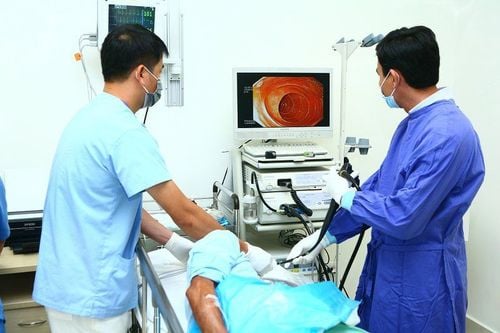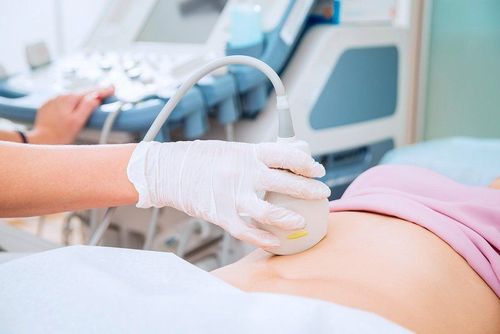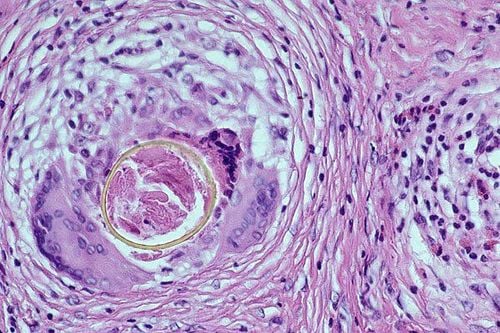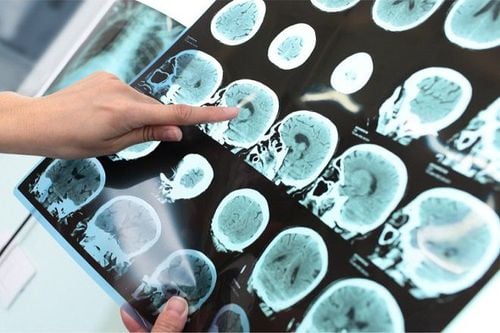This is an automatically translated article.
There are many types of tests used to diagnose stomach cancer. For example, a biopsy to know for sure if cancer is present, imaging tests to see how far the cancer has spread, and more. Depending on the type of cancer suspected, the signs and symptoms of the disease, your age and overall health, and previous test results, your doctor will recommend the right types of tests to diagnose the condition. your.
1. Biopsy
Physical examination when symptoms of stomach disease are incidental to help diagnose stomach cancer at an early stage in many people. Checking stats on blood tests, imaging tests, etc. Create a basis for doctors to suspect stomach cancer and conduct further tests to confirm the disease, including biopsies.
A biopsy is the removal of a small amount of tissue from a suspected cancer area for examination under a microscope. Other tests of the body suggest that cancer is present, but only a biopsy can confirm the diagnosis. Biopsy is performed by a pathologist, who specializes in evaluating cells, tissues, and organs to diagnose disease.
2. Check the molecular properties of the tumor
Tumor molecular testing may be suggested to identify tumor-specific genes, proteins and other factors. The results of the test can help determine treatment options.
For gastric cancer, testing can be done for PD-L1 and high microglial instability (MSI-H). The test may also be done to determine if the tumor is making too much of a protein called human epidermal growth factor receptor (HER2), especially with advanced cancer. The results of these tests help your doctor decide whether to use immunotherapy for treatment.
MORE: How to diagnose stomach cancer early
Trắc nghiệm: Bạn có biết những sự thật này về dạ dày không?
Hoạt động của dạ dày là một hoạt động quan trọng giúp cơ thể dung nạp và chuyển hóa dinh dưỡng từ thực phẩm hàng ngày. Tuy nhiên, không phải ai cũng biết rõ về dạ dày cũng như các vấn đề xoay quanh hoạt động tiêu hóa thức ăn của nó. Hãy cùng tìm hiểu kỹ hơn trong bài trắc nghiệm dưới đây.
Bài dịch từ: webmd.com
3. Gastroscopy
Gastroscopy helps the doctor see inside the body through a soft, thin, lighted tube called a gastroscope. To relieve pain, your doctor may recommend safe medications during your colonoscopy. During a colonoscopy, your doctor may take a tissue sample for a biopsy to check for signs of cancer.

4. Endoscopic ultrasound
Similar to endoscopy, but the gastroscope has an extra small ultrasound probe at the tip to perform the function of endoscopy combined with ultrasound. The ultrasound combined with the endoscope helps the doctor get a close-up ultrasound of the stomach, lymph nodes, tissues and nearby organs such as the liver or adrenal gland to determine the extent of cancer metastasis.
5. X-rays
An X-ray is a way to create images of structures inside the body using a small amount of radiation. It is often used to determine the extent of tumor metastasis.
6. Contrast X-ray of upper gastrointestinal tract with Barium
Ingested barium can coat the lining of the esophagus, stomach, and intestines. Therefore, when an X-ray is taken, tumors or other abnormalities can easily be seen on the film.
7. Computed tomography (CT or CAT)
CT scan allows the body to be viewed from many different angles with detailed 3-D images, from which it is easy to see tumors and other abnormal images. A CT scan can be used to measure the size of the tumor.
Contrast in liquid form to be swallowed or injected into a vein can be used to increase image sharpness.
8. Magnetic Resonance Imaging (MRI)
MRI uses a magnetic field, not X-rays, to create detailed images of the body. It can be used to measure the size of a tumor. Contrast is usually injected into a vein before the scan is taken to create a clearer image.

9. Positron emission tomography (PET) or PET-CT
PET scan is often combined with CT scan, called PET-CT scan with similar description to PET scan. PET scans are used to create images of organs and tissues inside the body. A small amount of radioactive sugar is injected into the patient's body. This sugar is absorbed by the cells that use the most energy. If cancer cells are present, they will absorb more radioactive sugar than normal cells. Under PET imaging, cancer can be detected in areas that have absorbed a lot of radiation.
10. Laparoscopy
Laparoscopy is a minor surgery in which a doctor inserts a laparoscope into the abdominal cavity to find out if cancer has spread to the lining of the abdominal cavity or to the liver. CT and PET scans often cannot detect cancer that has spread to these areas.
After the required tests have been performed, your doctor will discuss the test results with you. If they are cancerous, they will help your doctor determine the extent of the cancer and recommend the right treatment for your current condition.
Stomach cancer is the most common gastrointestinal cancer today. Accordingly, the gastrointestinal cancer screening is a scientific and effective measure to detect stomach cancer as well as many other cancers. Currently, Vinmec International General Hospital is fully equipped with imaging facilities and tests to diagnose stomach cancer as well as many other cancers. In particular, there is a package for screening and early detection of cancers of the gastrointestinal tract (esophagus - stomach - colon) combining clinical and paraclinical examination to bring about the most accurate results possible.
When screening for gastrointestinal cancer at Vinmec, you will receive:
Gastrointestinal specialty examination with an oncologist (by appointment). Gastroscopy and colonoscopy with an NBI endoscope with anesthesia. Peripheral blood count (laser counter). Automated prothrombin time test. Automated thrombin time test. Activated Partial Thromboplastin Time (APTT) test using an automated machine. General abdominal ultrasound
Please dial HOTLINE for more information or register for an appointment HERE. Download MyVinmec app to make appointments faster and to manage your bookings easily.
Reference source: cancer.net












